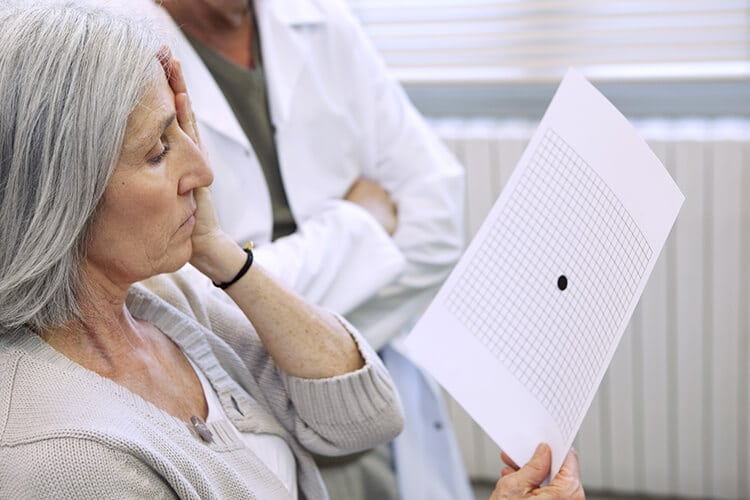
Age-related macular degeneration (AMD) is a leading cause of vision loss in individuals over the age of 50, affecting the macula—the central area of the retina responsible for clear, detailed vision. This condition significantly impacts one's ability to perform tasks that require sharp central vision, such as reading, driving, and recognizing faces.
The Critical Function of the Macula
The macula's integrity is vital for high-resolution vision. When AMD damages the macula, it can distort vision, making straight lines appear wavy and blurring central vision. As AMD advances, it can lead to 'legal blindness,' where central vision is lost while peripheral vision remains intact.
Distinguishing Between Dry and Wet AMD
AMD presents in two primary types: dry and wet. Dry AMD, which is more prevalent, is identified by the accumulation of drusen—yellowish deposits beneath the retina. Initially, small drusen may not affect vision, but as they grow and increase in number, they can cause significant visual distortion. In its advanced stages, dry AMD can lead to the deterioration and death of cells in the macula. Wet AMD, although less common, is more aggressive and is caused by the formation of new, abnormal blood vessels under the retina, which can leak fluid and blood, damaging the macula and leading to rapid vision loss.
Risk Factors and Preventative Actions
While aging is the primary risk factor for AMD, genetic predisposition, ethnicity, and lifestyle choices such as smoking also play significant roles. Caucasians and those with a family history of AMD are at a heightened risk. To reduce the likelihood of developing AMD, lifestyle modifications are recommended, including a nutritious diet rich in leafy greens and fish, consistent exercise, and the management of blood pressure and cholesterol levels.
Symptoms and the Importance of Early Detection
The symptoms of AMD can be subtle and progress gradually. They include visual distortions, such as seeing straight lines as bent, reduced central vision, difficulty adjusting to low light levels, blurred text, diminished color intensity, and challenges in facial recognition. Early detection through comprehensive eye exams is essential for managing AMD effectively. These exams may involve tests to measure visual acuity and detailed retinal imaging.
Treatment Approaches for AMD
There is currently no cure for AMD, but there are treatments available that can slow its progression and, in some cases, improve vision. For dry AMD, nutritional supplements containing a specific combination of vitamins and minerals are often recommended. For wet AMD, anti-VEGF injections are a common treatment to reduce the growth of abnormal blood vessels. Other treatments, such as laser therapy and photodynamic therapy, may also be considered for certain cases of wet AMD.
Adapting to Life with AMD
Adjusting to life with AMD involves utilizing low-vision aids and embracing adaptive technologies that can help maintain independence and quality of life. Support groups and counseling services provide emotional support and coping strategies.
Conclusion
AMD is a chronic condition that can profoundly impact vision and daily life. Recognizing the risk factors and symptoms is crucial for seeking timely medical intervention. Regular eye examinations are key to early detection and management of AMD. With the right treatment plan and support, individuals with AMD can continue to lead fulfilling lives, enjoying their activities and independence. It is essential for those at risk or over the age of 50 to have their eyes checked regularly to monitor for signs of AMD and take proactive steps to preserve their vision.




